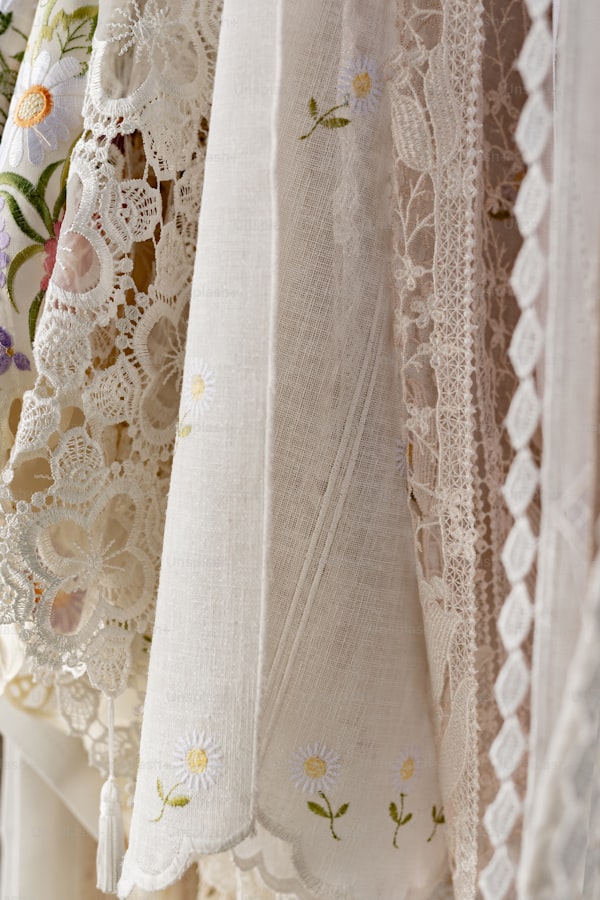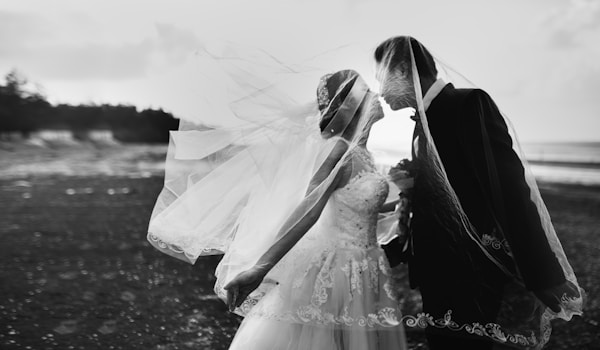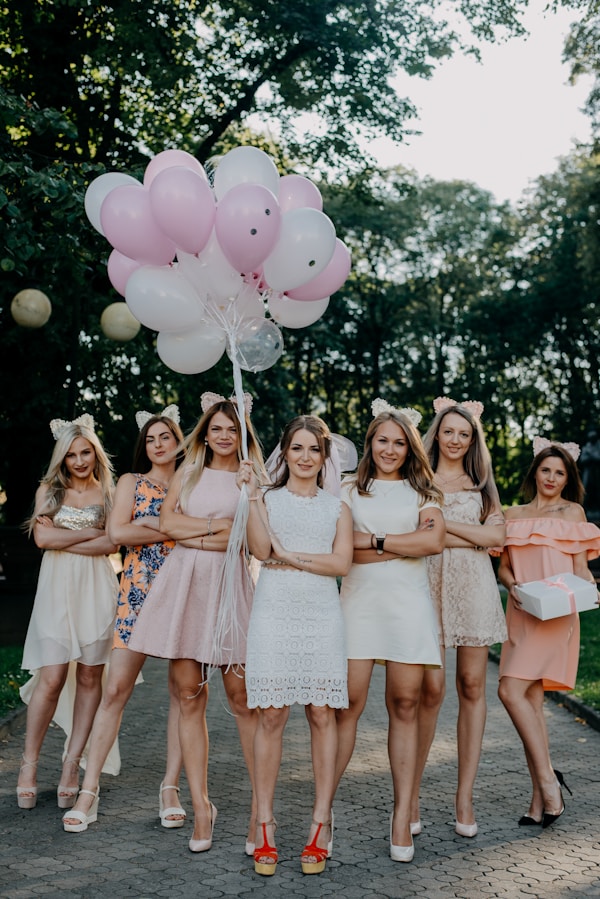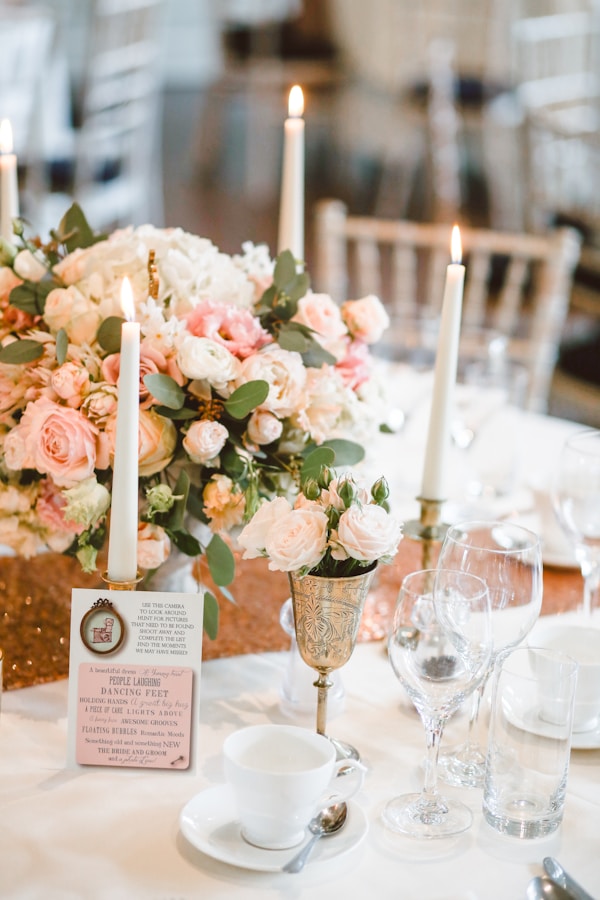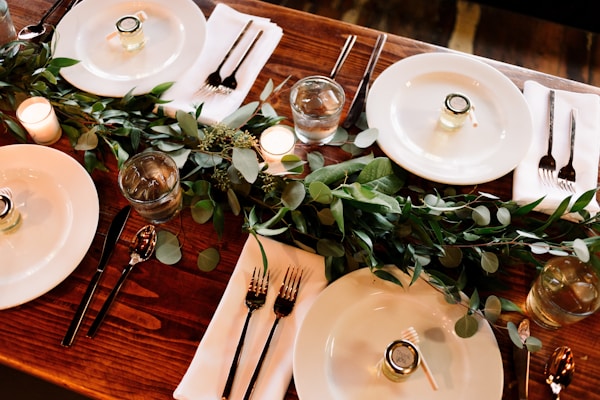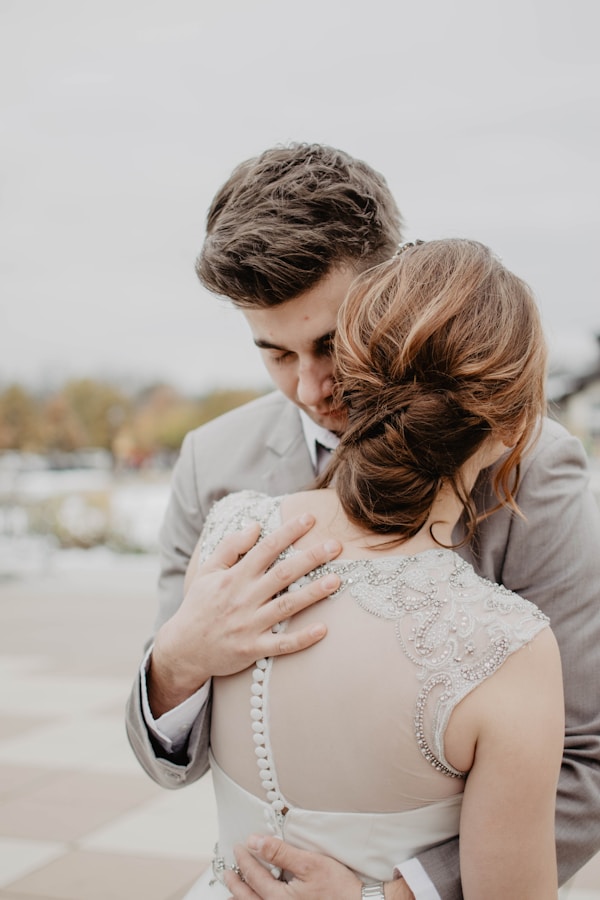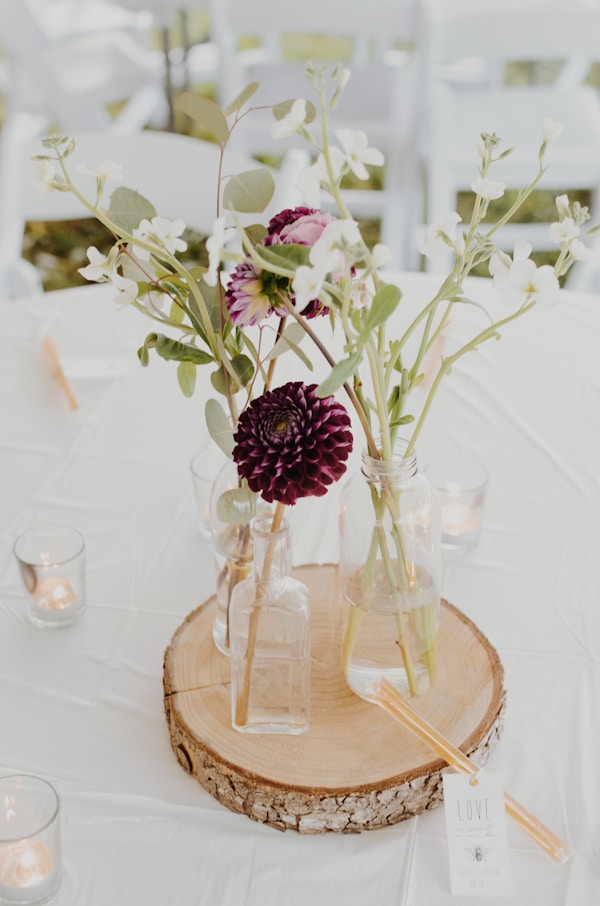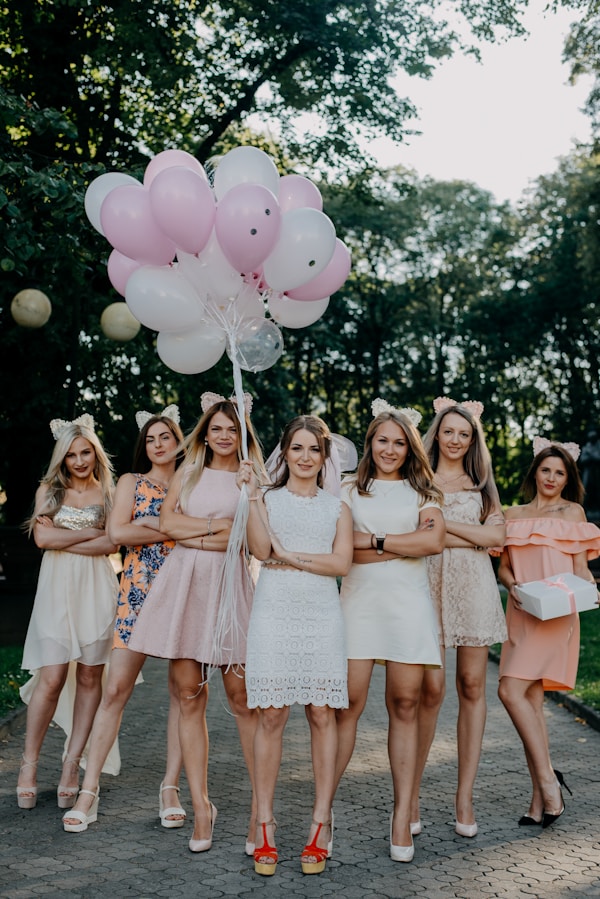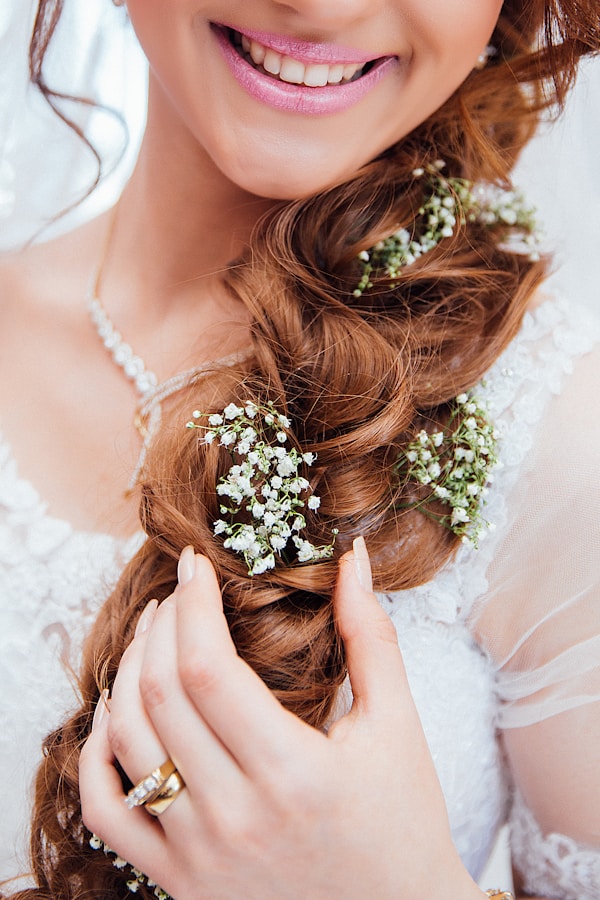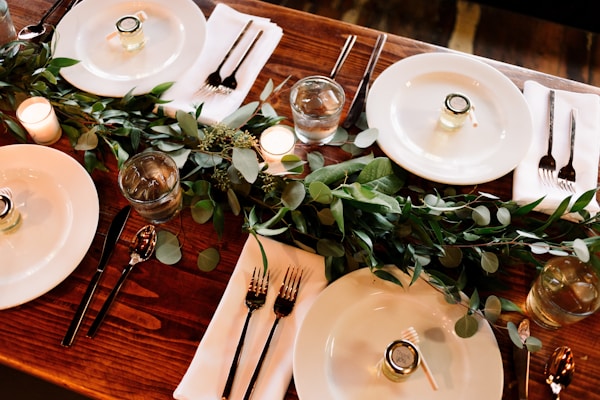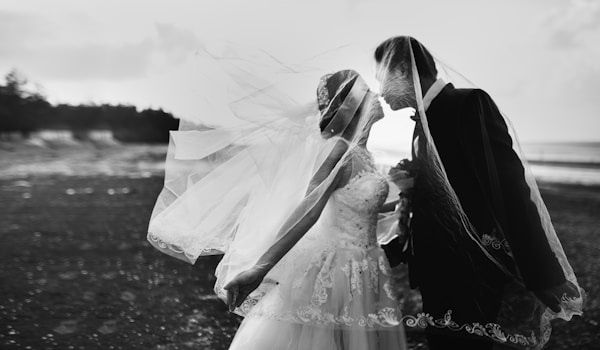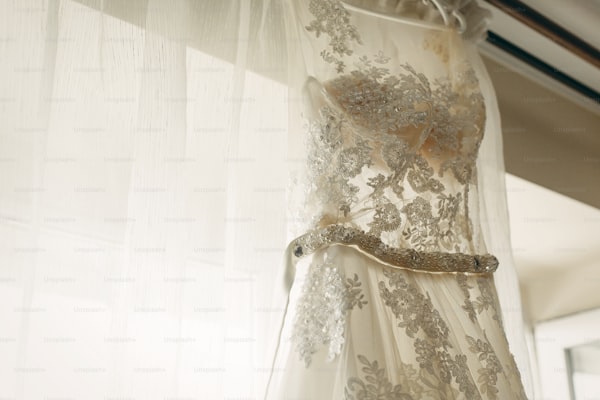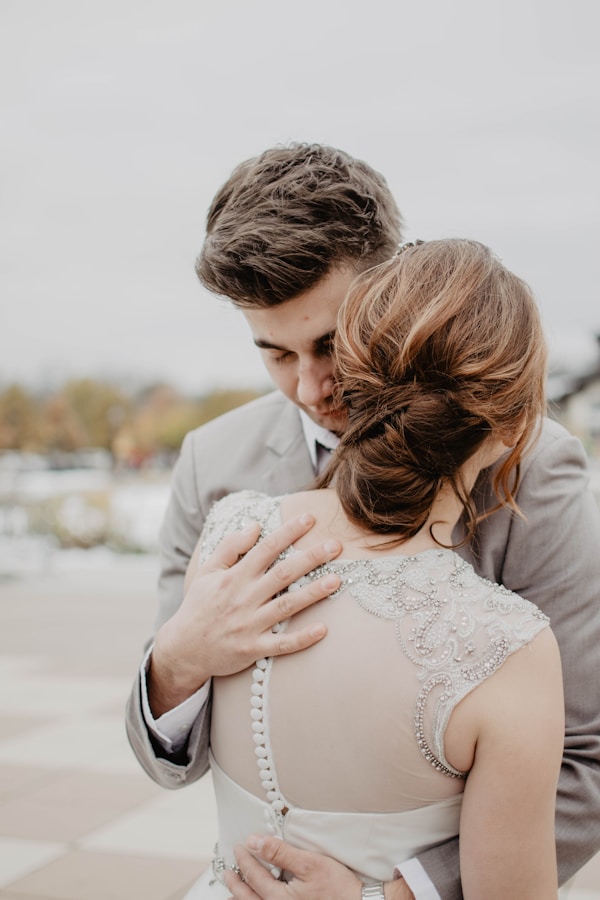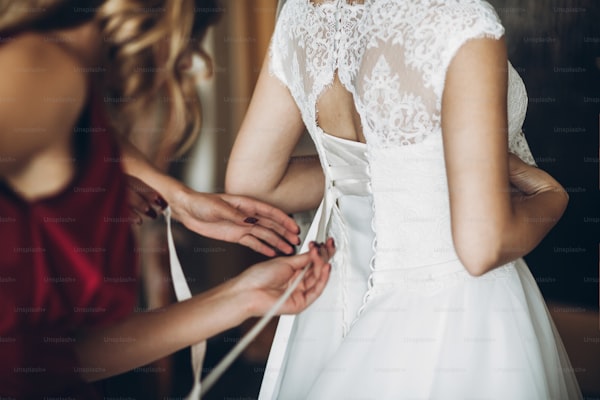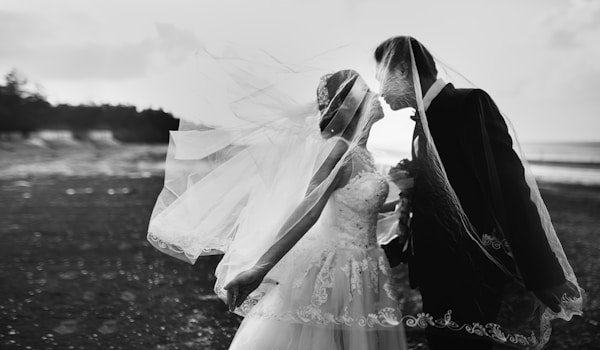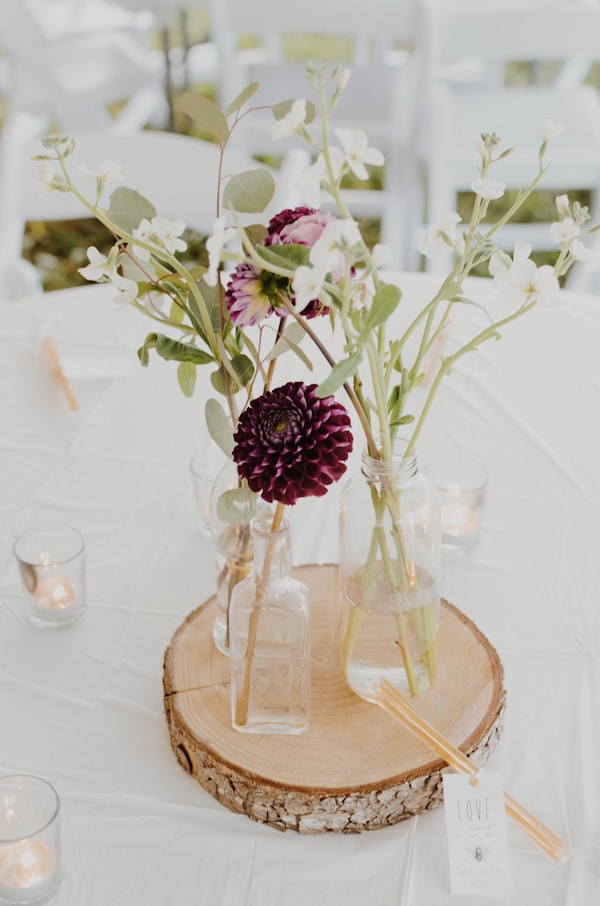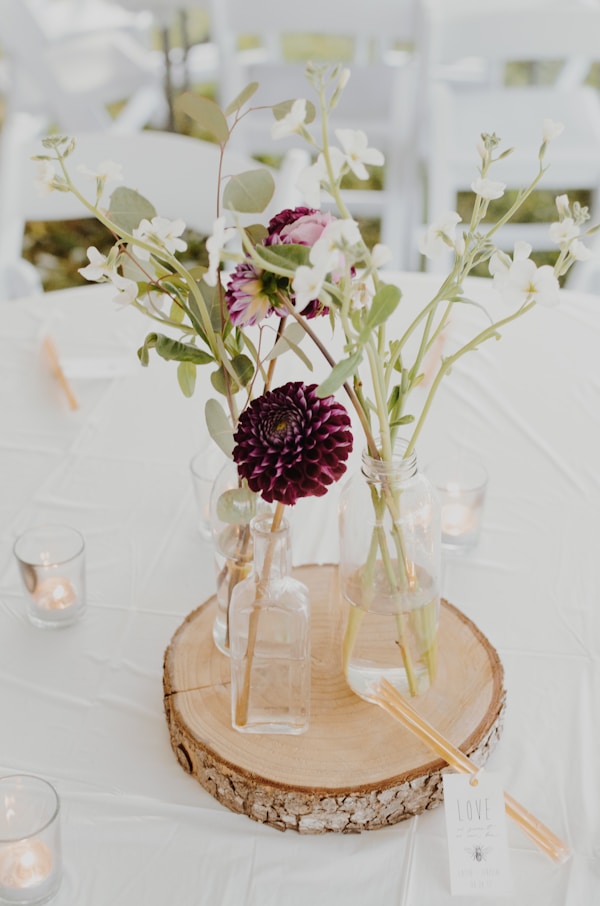How to Effectively Manage Production Timelines for Custom Wedding Dress Orders
Understanding Production Timelines for Custom Wedding DressesWhen it comes to planning a wedding, selecting the perfect dress is a priority for many brides. Custom wedding dresses offer a unique touch, allowing brides to express their personal style. However, one crucial aspect often overlooked is managing the production timeline for these bespoke creations. In this article, we will explore how to effectively manage production timelines for custom wedding dress orders, ensuring that every bride receives her dream dress on time.The Importance of a Well-Defined TimelineA well-planned timeline is essential not only for the bridal boutique but also for brides who anticipate their custom dress. Understanding how to manage production timelines ensures that all details are accounted for and that the process runs smoothly. Here are the key reasons why having a defined timeline is important: Reducing Anxiety: Weddings can be stressful, and knowing when to expect the dress can alleviate some anxiety for the bride. Ensuring Quality Control: A scheduled timeline allows for checks at various stages, thus maintaining the dress's quality. Coordination with Other Vendors: Timelines help in coordinating the delivery of other wedding elements, ensuring that everything aligns perfectly on the big day.Key Components of a Production TimelineWhen it comes to custom wedding dress orders, several key components need to be included in the production timeline: Stage Estimate...
Exploring the Techniques Behind Creating a Stunning Wedding Dress with Tiered Layers
Introduction to Tiered Layer Wedding DressesChoosing the perfect wedding dress is a momentous occasion for brides-to-be. Among the many styles available, dresses with tiered layers have gained immense popularity due to their exquisite design and elegance. But what techniques are used to create these stunning wedding dresses with tiered layers? In this article, we will delve into the crafting of these beautiful garments, exploring design aspects, techniques, and essential considerations for brides who dream of a tiered layer wedding dress.Understanding Tiered LayersTiered layers are characterized by their cascading effect, where each layer of fabric is strategically placed to create movement and depth. This style adds a playful yet sophisticated touch to the overall look. Many brides opt for tiered dresses because they can enhance body shape, highlight features, and offer a unique aesthetic that can be both modern and timeless.The Importance of Fabric ChoiceOne of the foundational techniques in creating a wedding dress with tiered layers begins with the selection of fabrics. The choice of material greatly affects the drape, weight, and feel of the dress. Common fabrics used include: Tulle: Lightweight and sheer, tulle adds volume without being overly heavy. Chiffon: Known for its flowy nature, chiffon works beautifully for soft and romantic layers. Satin: This luxurious fabric can provide structure while also allowing for tiered designs to flow elegantly. Organza: ...
How to Handle Alterations for a Wedding Dress with a Criss-Cross Back
Choosing a wedding dress is one of the most important decisions in wedding planning. A well-fitted dress not only enhances your beauty but also ensures you feel comfortable and confident on your big day. When it comes to specialized designs like a wedding dress with a criss-cross back, alterations can be a bit tricky. In this article, we'll explore how to handle alterations for such a dress, answer frequently asked questions, and provide you with essential tips for your fitting sessions. Understanding the Criss-Cross Back Design The criss-cross back design is popular for its elegant and flattering silhouette. It adds a unique touch to wedding gowns, making them stand out. However, this intricate design often requires more technical alterations compared to traditional styles. Commonly, criss-cross backs are made of delicate fabrics, which adds to the challenge of finding the right fit. Factors to Consider for Alterations Before diving into alterations, keep these factors in mind: Fabric Type: Delicate fabrics like lace, chiffon, and satin may require specific handling. Always use a specialized tailor to avoid damaging these materials. Design Complexity: The criss-cross pattern may be attached to other design elements such as beadwork or embroidery. Tailors must assess these elements carefully to maintain the overall look. Body Measurements: Accurate measurements are crucial. Ensure that you take various positions into account to ensure the back fits well when you mo...
Creating a Timeless Wedding Dress: Methods for Achieving a Clean, Tailored Look
IntroductionWhen it comes to wedding dresses, the desire for a clean and tailored look is timeless. Many brides envision a gown that not only reflects their personal style but also possesses elegance and simplicity. This type of design often requires specific methods and techniques that can transform a vision into reality. In this article, we will explore various methods used to create a wedding dress with a clean, tailored look, addressing common concerns and questions brides might have along the way.Understanding the Basics: Choosing the Right FabricThe journey of creating the perfect wedding dress often starts with selecting the right fabric. Fabrics such as silk, satin, and chiffon are popular choices for their luxurious feel and drape. These materials can help in achieving that smooth and clean silhouette brides desire. Additionally, understanding the weight and structure of different fabrics allows designers to incorporate elements that enhance the dress’s tailored appearance.Essential Techniques for a Tailored Look1. Structured BodicesA structured bodice is essential for a clean look, providing support and shaping. Designers often use boning, a technique that incorporates thin strips of plastic or metal within the dress’s lining to create a supportive framework.2. Clean SeamsSeam finishing plays a vital role in achieving a polished aesthetic. Techniques such as French seams or flat-felled seams can give the edges a neat appearance while also reinforcing the overall st...
Ensuring Your Wedding Dress Maintains Its Structure Throughout the Day: Essential Tips and Techniques
IntroductionWhen it comes to your wedding day, every detail matters, especially your wedding dress. A beautifully crafted gown is a centerpiece of your celebration, but how do you ensure that it maintains its structure throughout the day? In this article, we’ll explore various techniques and tips that brides can apply to keep their wedding dress looking stunning from the first moment to the last dance.Understanding the Components of Wedding Dress StructureBefore we get into the practical advice, let’s take a moment to understand what contributes to the structure of a wedding dress. The construction materials and techniques greatly influence how a dress behaves throughout a long day. Here are some key components:Boning: Many wedding dresses feature boning, which helps to keep the bodice structured and supportive.Layers: The use of multiple layers, such as tulle or organza, can create volume without adding much weight.Seams and Stitching: Well-placed seams and secure stitching contribute to the overall durability of the gown.Preparation: Choosing the Right DressTo ensure your wedding dress maintains its structure, the first step is choosing the right gown. Here are some factors to consider:Fabric SelectionOpt for fabrics that have body and hold their shape well. Silk and satin are excellent choices due to their weight and drape. Avoid excessively sheer or lightweight fabrics that might not stand the test of a long day.Dress StyleThe design of your dress plays a major role. A fi...
Steps for Creating a Wedding Dress with a Bold, Statement Color
Transforming Tradition: Crafting a Statement Wedding DressWhen it comes to wedding dresses, tradition often dictates that brides opt for classic whites, ivories, or creams. However, the modern bride is breaking away from these norms, seeking to express her individuality through bold, statement colors. If you've ever wondered what are the steps for creating a wedding dress with a bold, statement color, you're in the right place. In this article, we will explore the steps to design, create, and flaunt a wedding dress that truly reflects your unique personality.Understanding the Appeal of Bold ColorsThe first step in designing a wedding dress with a bold color is to understand why you might want to choose a non-traditional hue. Color can represent countless emotions and ideas, allowing you to express themes such as joy, passion, or comfort. Popular statement colors include strong reds, deep blues, vibrant greens, and even bold metallics. As you move forward with your design, consider the following factors: Personal Taste: First and foremost, the dress should be a reflection of your personal style. Wedding Theme: Ensure that the color complements your overall wedding theme or color palette. Season: Different colors resonate with varying seasons. For instance, warm tones like orange or plum can be perfect for fall, while pastels are suitable for spring.Steps for Creating Your Statement Wedding DressStep 1: Designing Your DressBegin by sketching your ideas on paper or using desi...
Designing the Perfect Wedding Dress for Pear-Shaped Figures: A Comprehensive Guide
Understanding Pear-Shaped FiguresDesigning a wedding dress is an intricate process, especially when it comes to accentuating a pear-shaped figure. A pear shape typically features a smaller upper body, wider hips, and a fuller bottom. The goal when creating a wedding dress is to highlight the waist while balancing the proportions. If you're looking to design a wedding dress that flatters this figure, you're in the right place. Here, we will explore various aspects, from styles and fabrics to tips on accessorizing.Key Elements to ConsiderAspectConsiderationsSilhouetteFit-and-flare or A-line styles work well, avoiding overly clingy fabrics at the hips.NecklineOpt for wide necklines like off-shoulder or boat neck styles to broaden the shoulders.Waist DesignA defined waistline helps to accentuate curves. Consider empire or natural waist styles.FabricsChoose structured materials like satin or taffeta to provide support, but flowy fabrics for the skirt.EmbellishmentsStrategically placed embellishments can draw attention to the upper body.Silhouettes That FlatterWhen designing a wedding dress for a pear-shaped figure, the silhouette plays a pivotal role. The most flattering options include:A-line Wedding DressesA-line dresses flow beautifully from the waist, which helps hide the hips. They are versatile and complement various body types. This silhouette creates a clean, elongated look, making it an excellent choice for brides looking to feel comfortable and stylish on their big day.F...
Exploring Techniques for Creating a Stunning Wedding Dress with a High Slit and Fitted Bodice
Wedding dresses have long been a symbol of elegance and romance, but more recently, modern brides are embracing bold designs that feature striking elements such as high slits and fitted bodices. In this article, we will explore various techniques that designers use to create these stunning dresses, while also addressing common questions surrounding wedding dress design.The Allure of High Slits and Fitted BodicesA wedding dress with a high slit adds a touch of drama and flirtation to a bride's look, while a fitted bodice accentuates the figure, creating a stunning silhouette. This combination not only highlights the bride's curves but also allows for ease of movement, making it a popular choice for many modern weddings. In this section, we will delve deeper into the techniques used to create these features.Key Techniques in Dress DesignTo achieve the perfect blend of a high slit and fitted bodice, designers employ various techniques:1. Fabric SelectionThe choice of fabric plays a crucial role in the dress's overall structure and appearance. Common fabrics for wedding dresses include:Fabric TypeCharacteristicsSatinLuxurious and smooth, perfect for fitted designs.LaceAdds texture and elegance, often used in bodice detailing.CrepeOffers a fluid drape, ideal for a high slit.By carefully selecting the right fabric, designers can create a dress that balances comfort with style.2. Pattern MakingPattern making involves creating a blueprint for the dress. Here are several aspects craft...
Mastering Production Management for Custom Hand-Sewn Lace Wedding Dresses
Introduction to Custom Wedding Dress ProductionWhen it comes to crafting the perfect wedding dress, every detail matters, but none more so than the intricate artistry of custom, hand-sewn lace. Managing the production of such exquisite garments involves a blend of creativity, technique, and strategic planning. In this article, we will explore the essential steps to effectively manage production for wedding dresses featuring custom lace, ensuring a seamless and successful outcome for both designers and brides alike.Understanding the Importance of Custom, Hand-Sewn LaceCustom lace adds a unique touch to wedding dresses, allowing brides to express their individuality. The charm of hand-sewn lace lies in its meticulous craftsmanship, providing unparalleled quality compared to machine-made options. However, this artisanal approach also introduces complexities in production management. Here are a few key considerations: Quality Control: Hand-sewn lace requires constant monitoring to maintain high standards. Time Management: The intricate process is time-consuming, necessitating effective scheduling. Skill Levels: The team involved must possess specialized skills in lacework and sewing.Production Workflow for Custom Lace Wedding DressesAt the heart of a successful production process is a well-defined workflow. Consider the following steps:StepDescriptionDesign ConsultationEngaging with the bride to understand her vision and preferences.Fabric SelectionChoosing the right fab...
Unveiling the Artistry: What Methods Are Used to Create a Wedding Dress with an Elaborate Train and Simple Bodice?
The Intersection of Elegance and Craftsmanship in Wedding Dress DesignEvery bride dreams of walking down the aisle in a stunning wedding dress that perfectly encapsulates her vision of beauty. Among the many styles available, the combination of an elaborate train and a simple bodice holds a special allure. This specific design balances intricate details with understated elegance, creating a breathtaking silhouette. In this article, we will explore the various methods used in crafting a wedding dress with an elaborate train and a simple bodice, as well as the factors that influence these design choices.Understanding the Anatomy of a Wedding DressBefore delving into the methods of creation, it’s essential to understand the basic components of a wedding dress. A typical wedding dress comprises various elements, each contributing to its overall aesthetic:Bodice: The upper part of the dress, which can be fitted or loose, often adorned with embellishments.Skirt: The lower part that flows from the waist, with a variety of shapes such as A-line, ball gown, or sheath.Train: An extended portion of the skirt that trails behind the bride, adding drama and elegance.Key Methods in Designing a Wedding Dress with a TrainCreating a wedding dress with a stunning train involves intricate craftsmanship and attention to detail. Here are some of the primary methods employed by designers:1. Draping TechniquesDraping is a foundational technique in fashion design, where fabric is arranged on a dress ...
Mastering Wedding Dress Alterations: A Comprehensive Guide to Handling Mixed-Fabric Textures
When it comes to wedding preparations, selecting the perfect wedding dress is often at the top of the list. However, one essential aspect that soon follows is the process of alterations, especially when dealing with mixed-fabric textures. Understanding how to handle these alterations effectively can make all the difference in achieving that flawless fit. In this guide, we’ll explore various techniques, considerations, and tips for managing alterations on wedding dresses composed of diverse fabrics.Understanding Wedding Dress FabricsWedding dresses can feature a plethora of fabric types, each bringing its own texture, weight, and drape. The most common fabrics include: Silk Lace Tulle Chiffon OrganzaEach of these materials has unique properties that can affect how alterations are performed. For instance, lace may require delicate handling to avoid damaging its intricate patterns, while heavier fabrics like satin may require different techniques for a seamless finish.The Importance of Professional AlterationsWhile DIY alterations may be tempting due to cost-saving reasons, wedding dress alterations are best left to professionals, especially for mixed-fabric designs. A skilled seamstress understands the nuances of different fabrics and can execute alterations that maintain the integrity and beauty of the dress.Key Considerations for Altering Mixed-Fabric TexturesWhen it comes to altering a wedding dress made from mixed fabrics, there are several considerations to keep in mi...
Unveiling Elegance: Best Practices for Creating a Wedding Dress with Hidden Pockets
IntroductionWedding dresses are not just garments; they are symbols of love, dreams, and unforgettable moments. As brides seek both style and comfort on their big day, the incorporation of hidden pockets into wedding dresses has gained significant popularity. This article will explore the best practices for creating a wedding dress with hidden pockets, ensuring brides can enjoy the perfect blend of functionality and elegance.The Importance of Hidden PocketsIncorporating hidden pockets into wedding dresses is a game-changer for modern brides. Weddings are often long events filled with various activities like mingling, dancing, and interacting with guests. Having hidden pockets allows brides to carry essentials such as lip balm, tissues, or even their phones without needing an extra handbag that may clash with the bridal look.Additionally, pockets enhance the overall aesthetic of the dress. They can be subtly integrated into the design, allowing brides to maintain the integrity of the gown while enjoying added convenience. This functionality marries practicality with style, making it a trend worth considering when creating the perfect wedding gown.Best Practices for Creating Wedding Dresses with Hidden PocketsTo ensure the successful creation of a wedding dress featuring hidden pockets, several best practices should be considered:1. Design IntegrationWhen designing a wedding dress with hidden pockets, it’s essential to integrate them seamlessly into the gown’s silhouette. This ...
Ensuring a Lightweight Wedding Dress with a Built-in Petticoat: Tips and Tricks
IntroductionA wedding dress is one of the most significant aspects of a bride's big day. Selecting the perfect dress involves multiple factors including design, fabric, and comfort. One popular trend is the wedding dress with a built-in petticoat, which provides extra volume and structure. However, a common concern among brides is how to ensure that such a dress remains lightweight. This article will explore effective methods to keep your wedding dress both beautiful and effortless to wear, while also addressing related inquiries brides might have.Choosing the Right FabricThe first step in ensuring that your wedding dress with a built-in petticoat stays lightweight is selecting the right fabric. Different materials have varying weights and textures, impacting how the dress feels when worn. Here are some recommended lightweight options:Fabric TypeBenefitsOrganzaSheer and lightweight, adds volume without bulk.TulleSoft, airy fabric that is perfect for creating a lightweight appearance.ChiffonFlowy and delicate, ideal for softer silhouettes.GeorgetteSimilar to chiffon but slightly heavier, still maintains a lightweight feel.Designing the Petticoat EffectivelyIncorporating a petticoat into your wedding dress can add volume, but it doesn’t have to weigh your dress down. Here are some design considerations to keep in mind:Layering Wisely: Opt for fewer layers of tulle or organza in the petticoat. Too many layers can cause unnecessary weight.Use Lightweight Materials: As previously ...
Discover the Artistry Behind Creating a Wedding Dress with a Fitted Corset and Flowing Skirt
Unveiling the Techniques for Crafting the Perfect Wedding DressNothing embodies romance better than the vision of a bride walking down the aisle in a stunning wedding dress. With the popularity of fitted corsets and flowing skirts, many brides seek to understand the techniques behind these enchanting garments. In this article, we delve into the craftsmanship that goes into creating a wedding dress with a fitted corset and flowing skirt, revealing the secrets that make each dress a work of art.Understanding the Essential ElementsA wedding dress with a fitted corset and flowing skirt is not only aesthetically pleasing but also intricately designed to provide both support and elegance. The essential elements include:ElementDescriptionCorsetProvides structured support to create a defined waistline and accentuate the bride's silhouette.FabricDelicate materials such as tulle, chiffon, and satin are commonly used for the flowing skirt.SilhouetteShapes vary from A-line to ball gown, depending on the desired flow and volume.EmbellishmentsLace, beading, and embroidery can enhance the visual appeal of the dress.Techniques Employed in Creating the Dress1. Designing the CorsetThe creation of a fitted corset involves precise measurements and thoughtful design. Here are the primary techniques used:Pattern Making: Designers draft a corset pattern that captures the contours of the bride's body. This involves careful measurements of the bust, waist, and hips.Boning: To ensure structure, boning...
Mastering the Art of Managing Wedding Dress Production with Extensive Hand-Stitching
IntroductionIn the world of bridal fashion, the creation of wedding dresses that require extensive hand-stitching represents a meticulous and artistic endeavor. But how do you effectively manage this intricate production process to ensure that each gown is a masterpiece tailored for the bride? This article delves into the essential strategies, tools, and tips for managing the production of wedding dresses that demand significant hand-stitching, while also considering the critical aspects of quality control, labor management, and the importance of technique.Understanding the Wedding Dress Production ProcessThe production of wedding dresses involves several key stages, each requiring careful management. Below is a simplified overview:StageDescriptionDesignInitial sketches and concepts are created, often involving consultations with the bride to ensure her vision is captured.Fabric SelectionChoosing the right materials based on design requirements and hand-stitching techniques.Pattern MakingCreating patterns that will guide the cutting and construction of the dress.Sewing & Hand-StitchingCombining machine sewing with extensive hand-stitching to achieve the desired finish.FittingAdjustments are made for proper fit, considering the unique body shape of the bride.Finishing TouchesFinalizing the dress with embellishments and ensuring high-quality standards.Key Challenges in Hand-Stitching ProductionProducing wedding dresses that feature extensive hand-stitching is not without its ch...
Unveiling the Art of Creating a Wedding Dress with Layered, Detachable Skirts
When it comes to wedding planning, one of the most significant choices is undoubtedly the wedding dress. Among the latest trends, wedding dresses with layered, detachable skirts have gained remarkable popularity. Not only do these versatile gowns allow brides to change their look with ease, but they also add a touch of creativity to the overall bridal aesthetic. In this article, we will delve into the methods used to create these stunning wedding dresses while addressing common questions aspiring brides might have.Understanding Layered, Detachable SkirtsLayered, detachable skirts are a delightful feature in contemporary bridal fashion. They provide flexibility, allowing brides to effortlessly transition from a grand ceremony look to a more relaxed reception outfit. This innovative design not only enhances the overall silhouette but also offers the opportunity for multiple styling options throughout the big day.The Design ProcessThe creation of a wedding dress with layered, detachable skirts involves several meticulous methods:1. Conceptualization and Design SketchesEvery great piece begins with an idea. Designers usually start by sketching the overall concept of the dress, focusing on the silhouette, fabric choices, and layering styles. This initial phase is crucial for visualizing how the final piece will look and function.2. Selecting the Right FabricsThe choice of fabric significantly affects the dress's drape and structure. For layered skirts, lightweight materials such a...
Ultimate Guide: How to Handle Alterations for a Wedding Dress with a Plunging V-Back
When it comes to preparing for your big day, every detail matters, especially your wedding dress. One popular design choice is the plunging V-back wedding dress, a style that strikes a balance between elegance and modern allure. However, alterations to ensure a perfect fit can be challenging. This article will cover everything you need to know about handling alterations for a wedding dress with a plunging V-back, including common issues, tips from experts, and more.Understanding the Design: The Plunging V-BackThe plunging V-back cut can enhance the silhouette and create an elongating effect on the back. While it’s a gorgeous choice for many brides, it requires careful consideration during alterations. Here are some key factors to consider:Style and Fabric: The type of fabric can affect how the dress falls and how easy it is to alter.Body Shape: Different body types may require varied alteration techniques to achieve the best fit.Bridal Movement: The alterations must accommodate movement without compromising the design.Common Issues with V-Back DressesSome common issues that brides encounter with plunging V-back dresses include:IssueDescriptionToo Loose or TightThe dress does not fit properly around the waist or bust.Uncomfortable NecklineThe plunge might be too low or irritating against the skin.Back DiscomfortThe cut may create issues with support or mobility.Steps to Handle AlterationsHandling alterations for a plunging V-back wedding dress requires a meticulous approach. H...
Unlock the Secrets: What Are the Steps for Creating a Wedding Dress with Custom Embroidery?
Crafting the Perfect Wedding Dress with Custom EmbroideryPlanning a wedding is an exciting yet challenging endeavor, and one of the most significant aspects of this process is choosing the perfect wedding dress. For many brides, this means creating a custom wedding dress that reflects their unique style and story. A popular trend in custom wedding dress design is the incorporation of custom embroidery. But what are the steps for creating a wedding dress with custom embroidery? In this article, we will explore each step in detail and provide insights on how to achieve the perfect look for your special day.Understanding the Basics of Custom Wedding DressesBefore diving into the steps, it's essential to understand what a custom wedding dress entails. Unlike off-the-rack dresses, custom wedding dresses are designed specifically for the bride, often involving personal touches that make the dress unique. Incorporating custom embroidery not only enhances the dress's beauty but also adds a personal touch that can carry sentimental value.Step 1: Define Your VisionThe first step in creating a custom wedding dress with embroidery is to define your vision. Consider the following:What style of wedding dress do you envision (A-line, mermaid, ball gown, etc.)?What color palette resonates with you?Are there specific themes or motifs you want to include in the embroidery?What overall message or feeling do you want your dress to convey?Take your time to gather inspiration. Create a mood board ...
Designing an Easy-to-Accessorize Wedding Dress: A Guide for Brides-to-Be
Exploring the Beauty of Versatile Wedding Dress DesignsChoosing a wedding dress is one of the most significant decisions for brides-to-be. Not only does the dress need to embody the bride's personal style, but it must also offer versatility to accommodate various accessories, particularly jewelry. In this article, we delve into how to design a wedding dress that is easy to accessorize with different jewelry while maintaining a stunning and cohesive look. This guide is sure to help brides navigate the world of bridal fashion seamlessly.Key Elements of a Versatile Wedding Dress DesignA well-designed wedding dress should strike a balance between elegance and adaptability. Here are some key elements to consider:Tailored Silhouette: A silhouette that flatters different body types can make it easier to find the right accessories.Neutral Color Palette: While white and ivory are traditional, consider soft pastels or even blush tones that can work with a variety of metals and styles.Simple Embellishments: Opt for subtle details rather than heavy beading, which can limit your choice of jewelry.Versatile Necklines: Styles like sweetheart, off-the-shoulder, or V-necklines can accommodate various necklace styles.Adjustable Features: Features like removable sleeves or belts can offer multiple styling options.Understanding Jewelry ChoicesWhen designing a wedding dress, it is essential to consider how different jewelry pieces will complement the overall look. Here are the types of jewelry co...
Mastering Minimalism: Techniques for Crafting a Wedding Dress with Intricate Details
In the world of fashion, especially when it comes to wedding attire, minimalism is a trend that many brides are embracing. A wedding dress that is minimalistic yet showcases intricate details embodies elegance and sophistication. This article explores the techniques used to create a wedding dress with a minimalistic design and intricate details, perfect for the modern bride seeking a blend of simplicity and artistry.Understanding Minimalistic Wedding Dress DesignMinimalism in wedding dress design focuses on simplicity and the essentials, eliminating unnecessary embellishments while still offering a stunning aesthetic. But how does one achieve such a balance? Below are some key techniques used in this style.Key Techniques in Minimalistic DesignCreating a wedding dress that is both minimalistic and detailed involves several techniques:1. Fabric SelectionThe choice of fabric plays a crucial role in achieving a minimalistic yet intricate design. Fabrics such as silk satin, chiffon, and crepe are popular for their fluidity and luxurious appearance. These materials drape beautifully and allow for clean lines, while still lending themselves to delicate detailing.2. Tailoring and FitA well-fitted dress is essential in minimalistic designs. Tailoring techniques such as draping, bias-cutting, and precise measurements ensure that the dress hugs the body in all the right places. A skilled tailor can turn simple patterns into breathtaking designs by focusing on the silhouette and structur...
